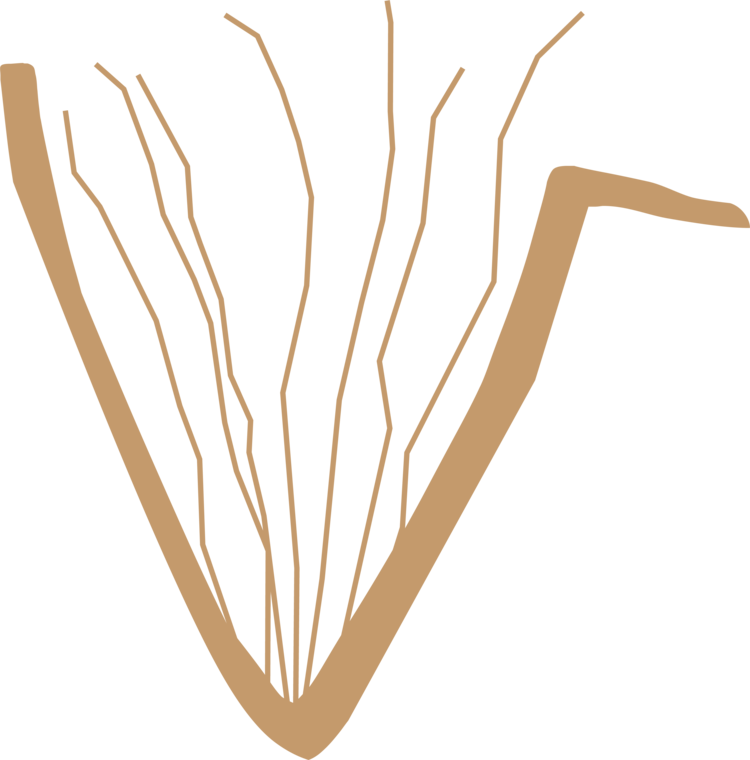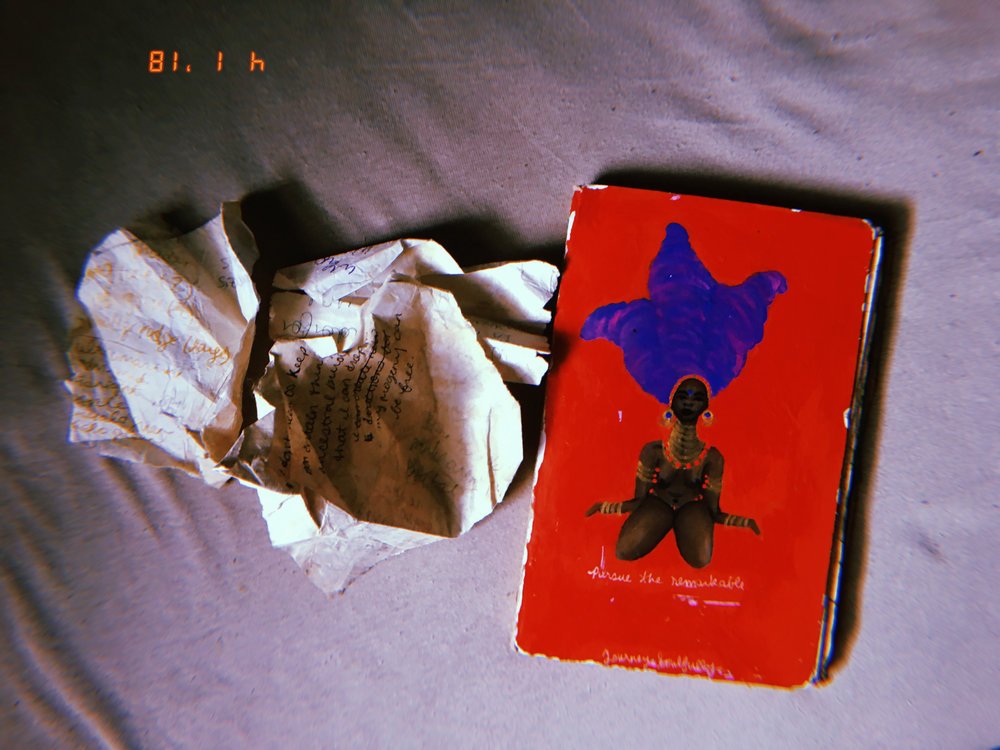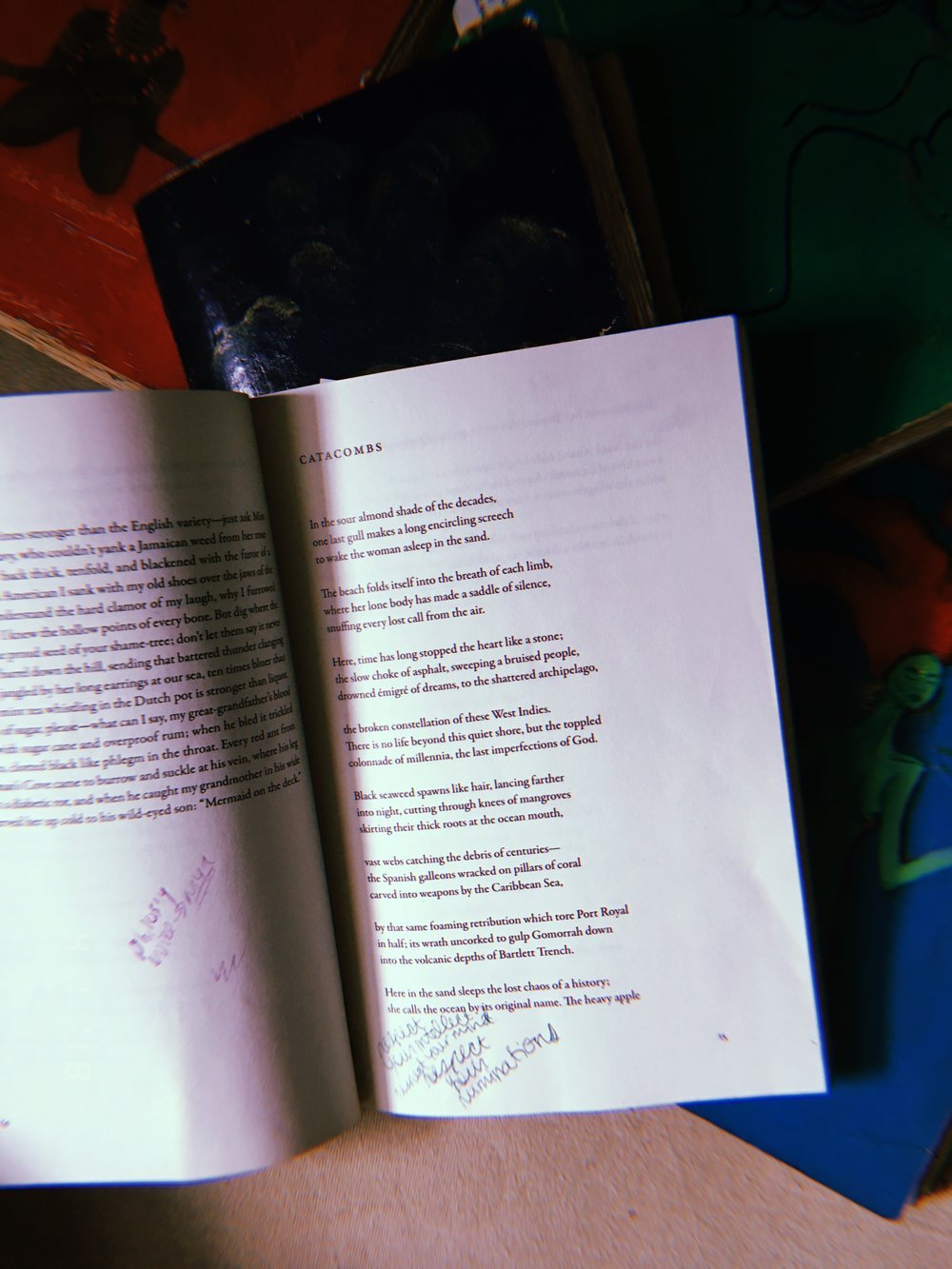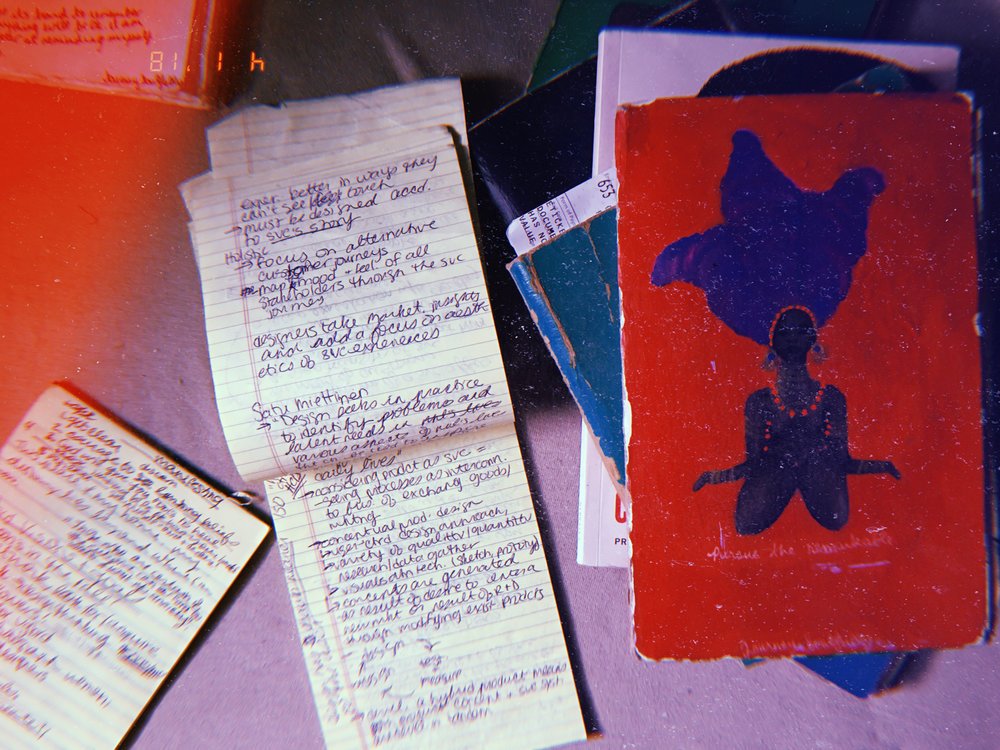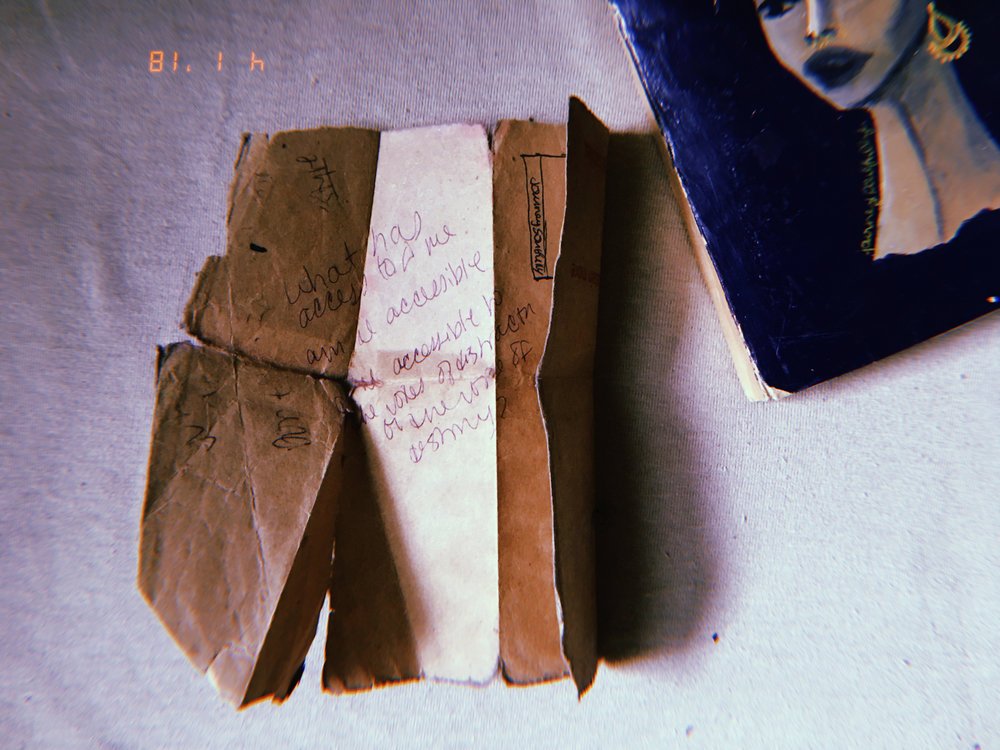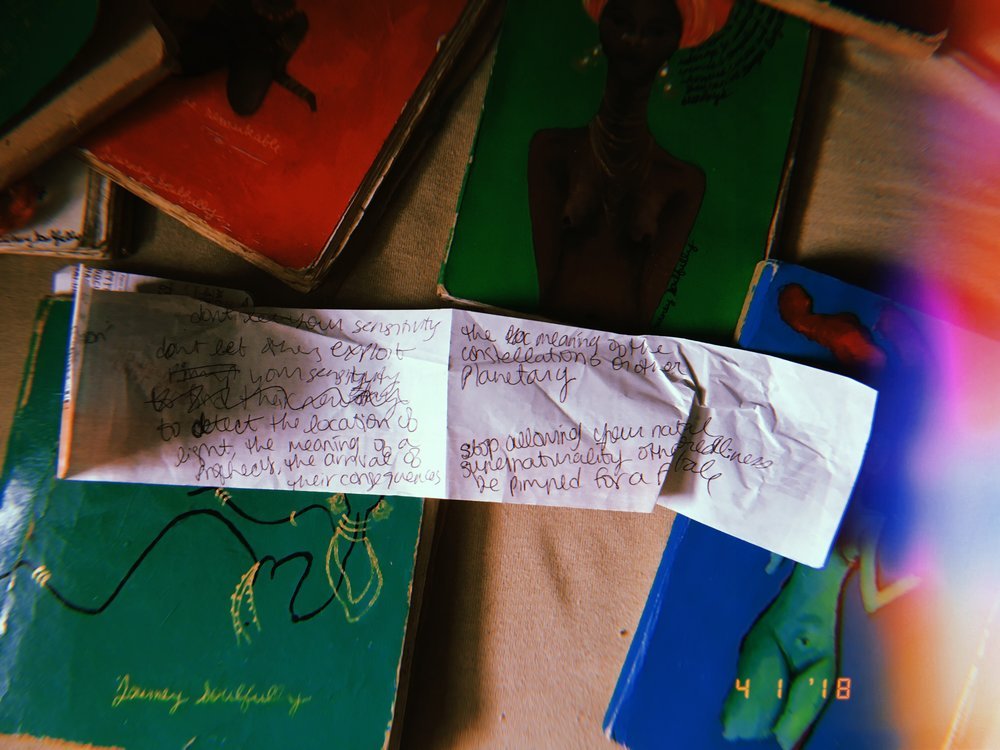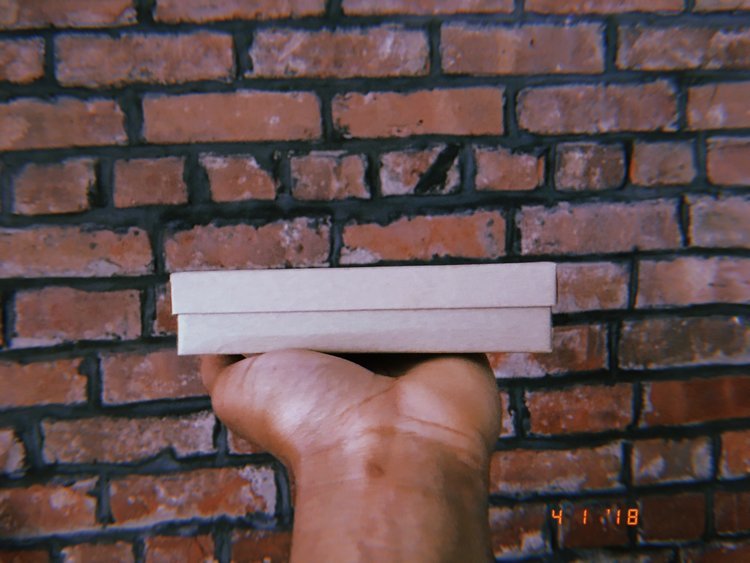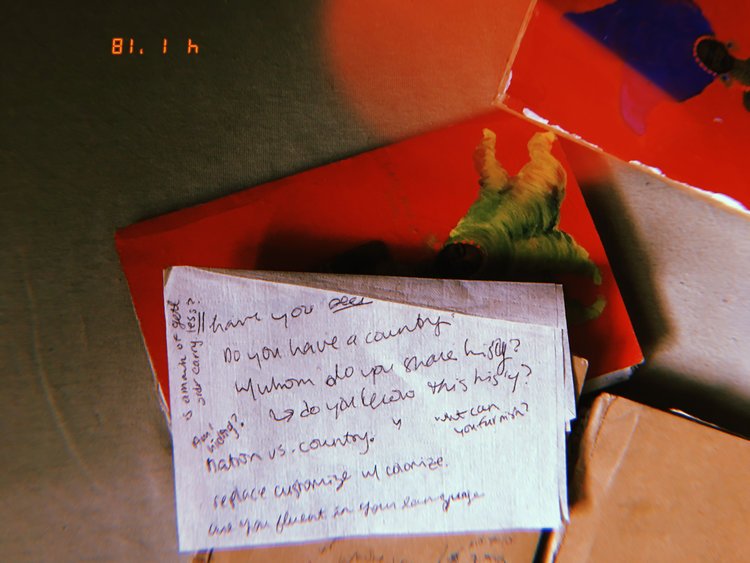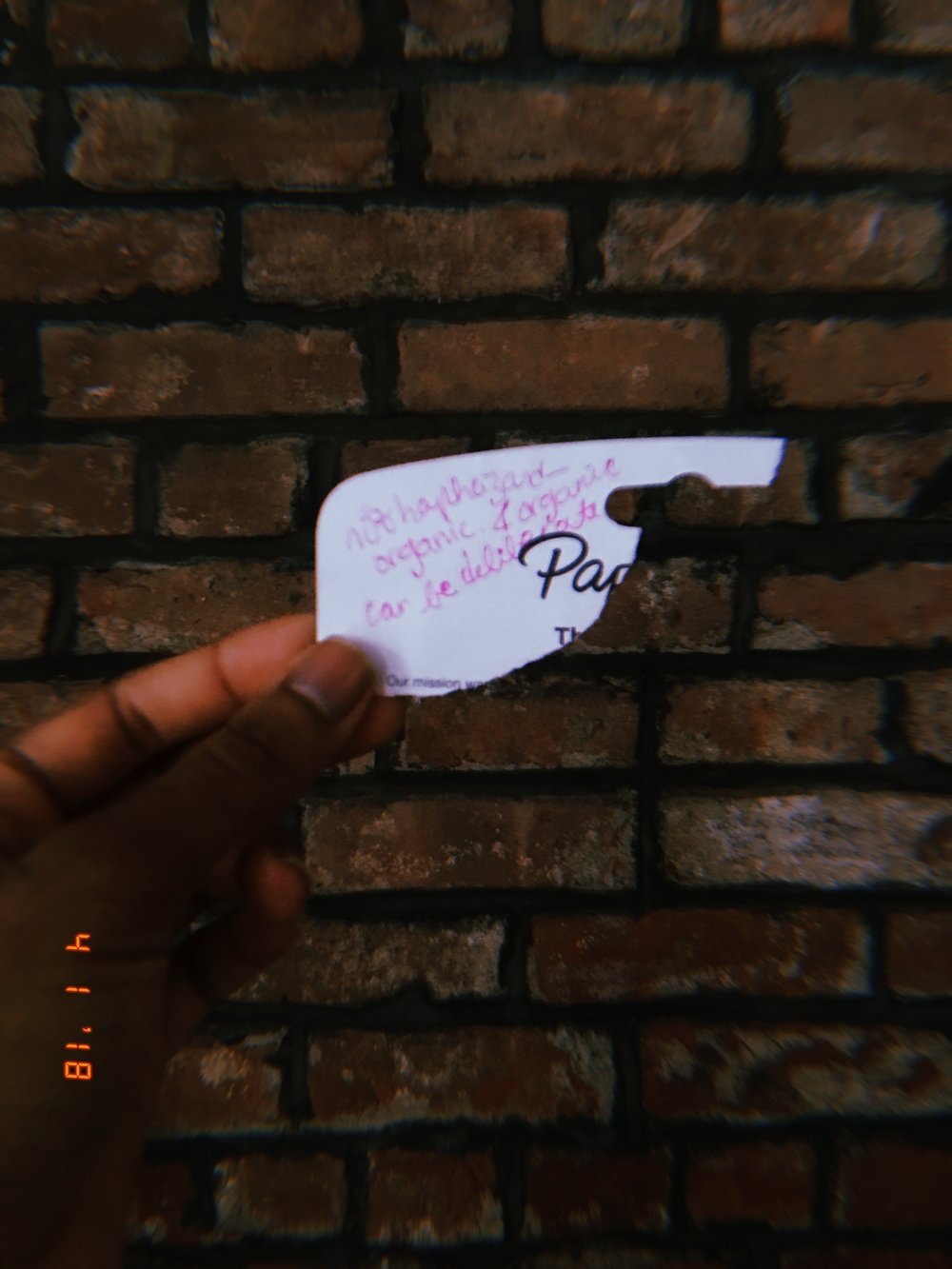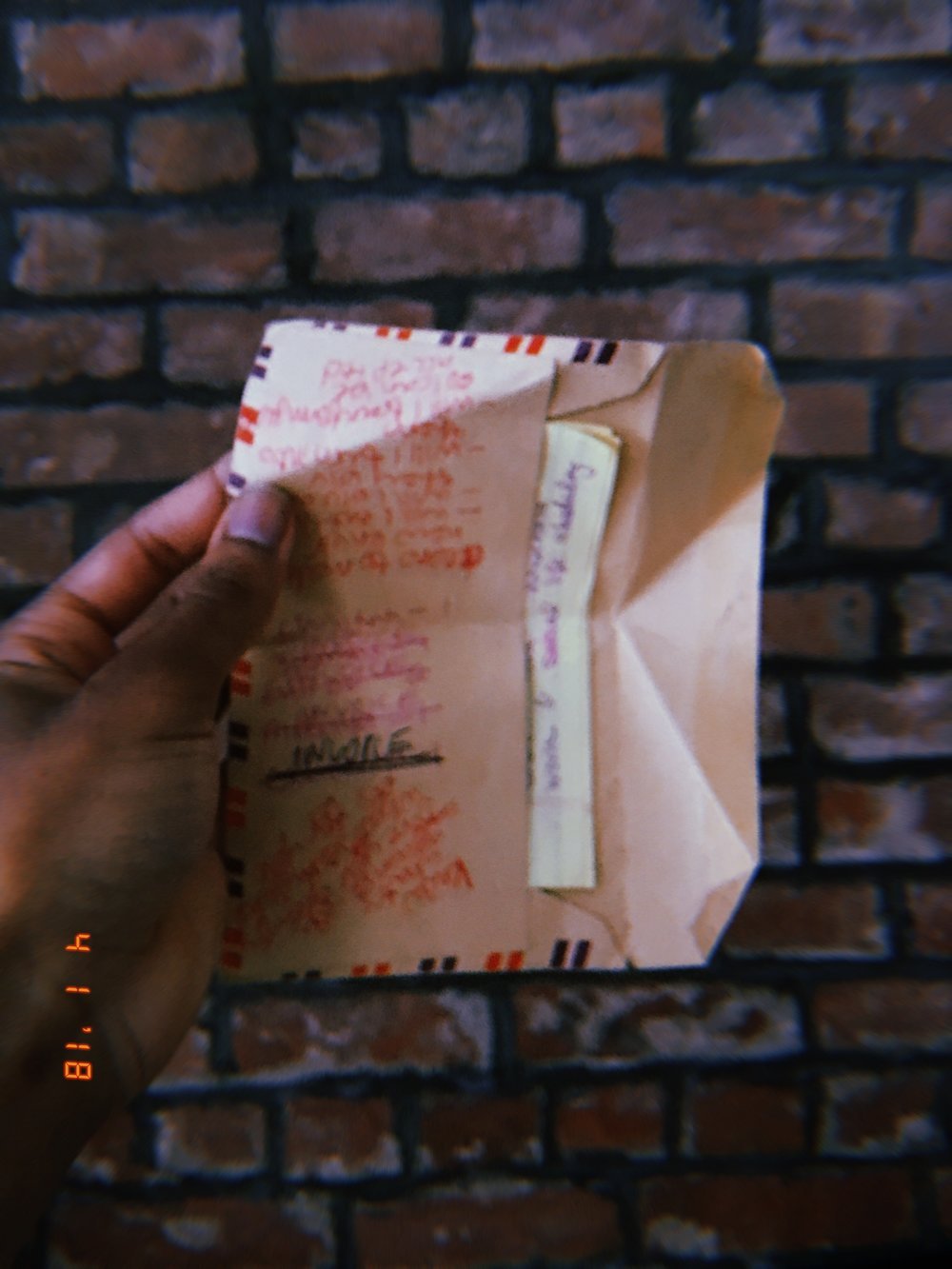Surface Level: Write, Here
10th Anniversary Repost: This is one of my favorite blog entries! Journaling as a teastained woman within a colonizing, capitalistic society means that our time is robbed of us on a daily basis as we work for survival, implying lesser time to write in our journals. Consequently, often times our journal entries originate as notes on disparate paper surfaces before they become fuller writings in our books. It’s the best we can do until we have the time/space/energy to linger and expound (which are unfortunately privileges in today’s world). I hope you’re inspired to shake any discouragement you may have about not being able to consistently document, record. Over 20 years of journaling has taught me that our memory honors even the notes we make in homage to greater words we have to put down…
Scraps of teastained pages always end up being used for random thoughts.
April 1, 2018—The other day while rummaging under my bed for a pair of socks, I came across a myriad of paper fragments with random sentences, lists of ideas, poems, and journal entries and pre-journal entry ideas scratched on them.
Turns out I don't discriminate when it comes to choosing a surface so I can get a thought out in haste. Pieces of packaging, the backs of torn up grocery bags, receipts, etc. were all my medium. I also came across some filled legal pads and old notebooks with lengthy ramblings, notes from Ted Talks, notes from book reading sessions, etc.
A note made on the margin of Cannibal by Safiya Sinclair.
Fascinated, I gathered the bits and pieces, arranging them on my floor.
It was like a private museum of thought. I recognized most of the words as journal entry ideas I'd eventually expounded upon, content I'd eventually create for Vagabroad, and micro notes to myself. I thought, "I really need to DO something with these. I can't throw them away!"
Regarding the diversity of surfaces indented and punctured with my penmanship, I was reminded of the importance of writing our words as soon as they come to mind--using ANY surface available at the moment to do so. "Is the journal overrated?" danced in my head as I beheld the sidereal paper remnants. What does it matter as long as you get your thoughts down? Ha. Can it hold words? Then it's qualified!
Notebooks I've used here and there for a quick-grab when out and about.
Earlier this year whilst doing personal research on the history of stationery I researched writing surfaces through the ages. I remarked at how, through the ages, nothing stopped scribblers from using whatever was at hand in their environments to...tell. To mark their words and render their thoughts visible. The urge to tell amazes me. Wet, caked mud, inscribed with a wedge-tipped writing tool and baked in the sun once completed, Cuneiform was the earliest known form of a writing surface used by Sumerians. The tablets lasted as long as they weren't dropped. Before paper arose to prominence, parchment made of animal hide was a writing surface of choice in 2nd century Greece. The vertically-oriented, ancient Chinese handwriting was perfectly suitable for slits of dried bamboo. Whilst that was the choice for more literate scribes, in ancient, rural China ox farmers would create "oracle bones" as a sort of pastime. An intuitive surface choice, the farmers would carve various phrases into the bone, break them into pieces and then reassemble them at random to create "fortunes" for the themselves. Continuing with bone, some of the earliest versions of the Quran were written on camel bones. In precolonial India, dried palm leaves were written on with ink made of dead insects, etc. and stitched into their earliest manuscripts. Aztecs wrote their calendars on deerhide, whilst Native North American tribes told their stories of peace, war, and migration on buffalo hides. And at least since the 70s youth have used graffiti on buildings, walls, subway cars, and other public spaces as a way to tell their stories, reinforce their existence, etc.
My point is that the journal is merely another surface. What makes it unique is its tome function where you are able to physically page through aggregated thoughts about yourself and your life. Assemblage and consistency of form are on your side. But that doesn't discount other surfaces.
Butcher paper I'd paint on top and make occasional notes.
Legal pads.
Bank enevelope.
A torn piece of grocery bag.
In those wonderful moments when a thought "dawns on you" or you have a moment of profound thought you don't always have time to go get your journal, so you do like those ancient rural Chinese ox farmers: use what you have at hand. If you're at work you can't stop typing that proposal, memo, or strategy deck because you have a journal entry burning in your mind. So you use post-it notes, or the back of your boss' crumpled letterhead in the trashcan at your feet. Maybe you're in the kitchen frying plantains and the only writable surface to scratch on before you lose the thought is the back of a recipe card or the inside of a label for the can of black beans. Maybe you're in the car waiting for your husband to finish in the hardware store and the only scrap paper is the margin of your magazine. Perhaps you're in the canned food aisle and you have to rip some coupons from the peel-off coupon stacks that hang from different shelves. Maybe you're in the doctor's waiting room and you have to use the only free space in the "Atherosclerosis" or "Dementia...Now What?" pamphlet. Or maybe you're on the bus and you have to use that mile-long CVS receipt as a pre-journal surface.
The back of a receipt.
Notes scratched on jewelry packaging
Cafe napkin.
There's something quite beautiful to using an endemic object in your current space for a writing surface. As banal or perhaps disloyal to your joural as it may feel, you're adding value to that once-ordinary surface by now entrusting it with your words.
Use any kind of surface to get your words down in the moment. And yes, eventually make time to transpose them into a journal--or at least tuck/ paste them into a book. If you transcribe the words then perhaps create a separate space for the original surface that held them?
Bank statement envelope (my fave surface!).
A kitchen check page from work.
Napkin and used sticker sheet.
From a pack of Papermate pens
Penpal lettre+envelope
Finally, keep your random notebooks and sketchbooks and pocket cahiers.
As a whole, from CVS receipt to pocket cahier, all of these are a sort of dismembered "calendar."
They represent your ways of telling time.
They add to your story. The've become part(s) of it.
All love,
Chimene
